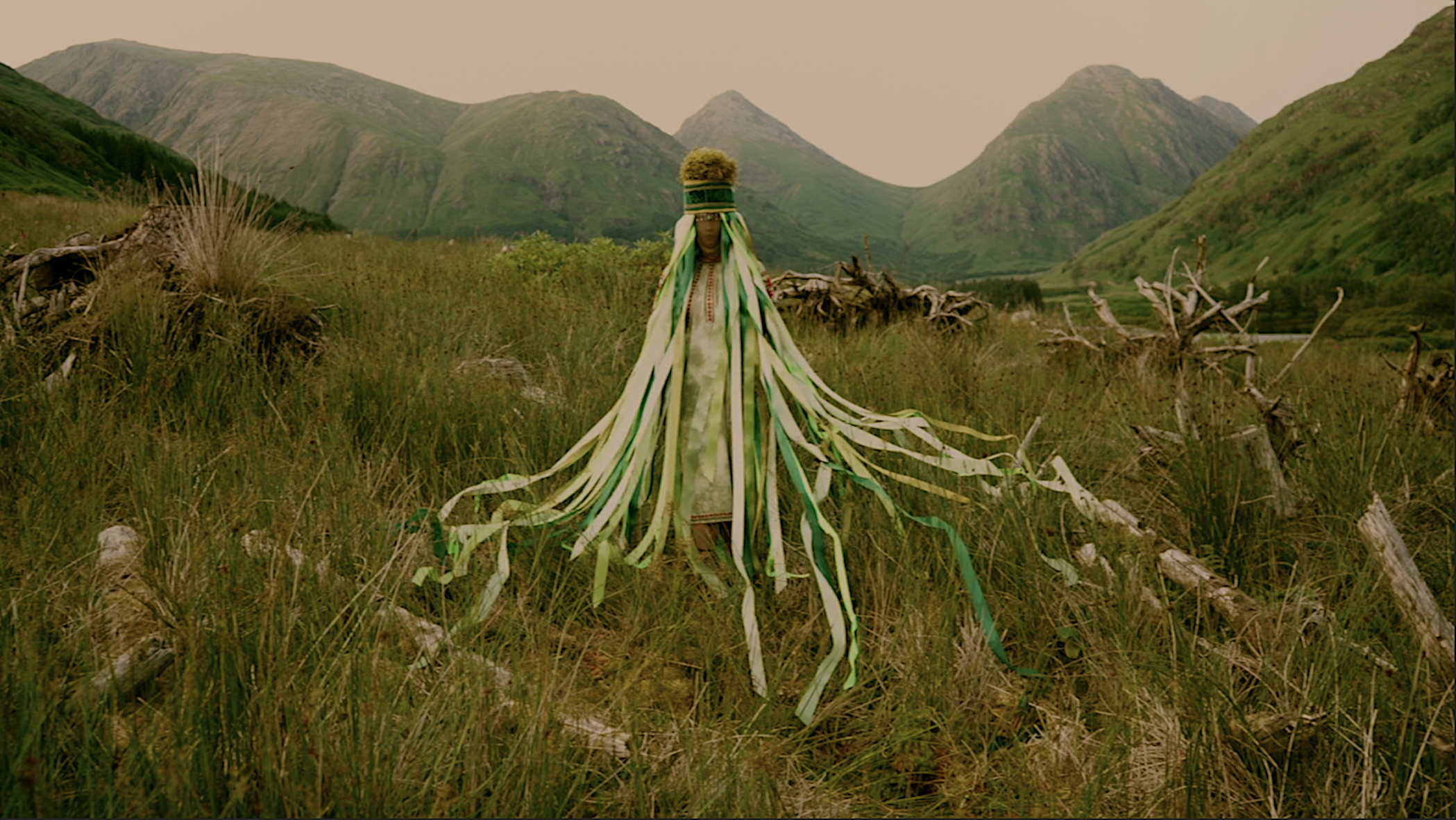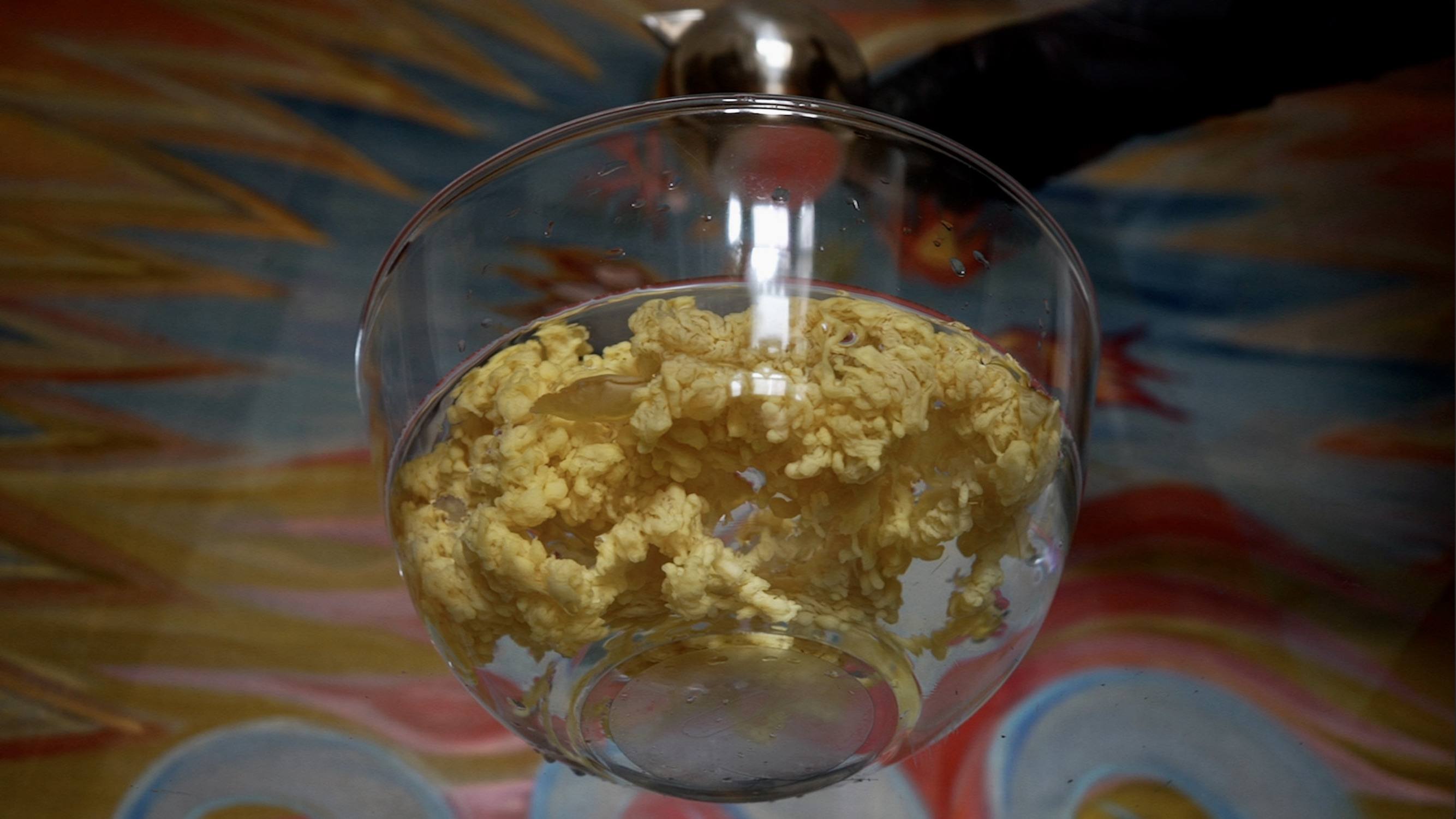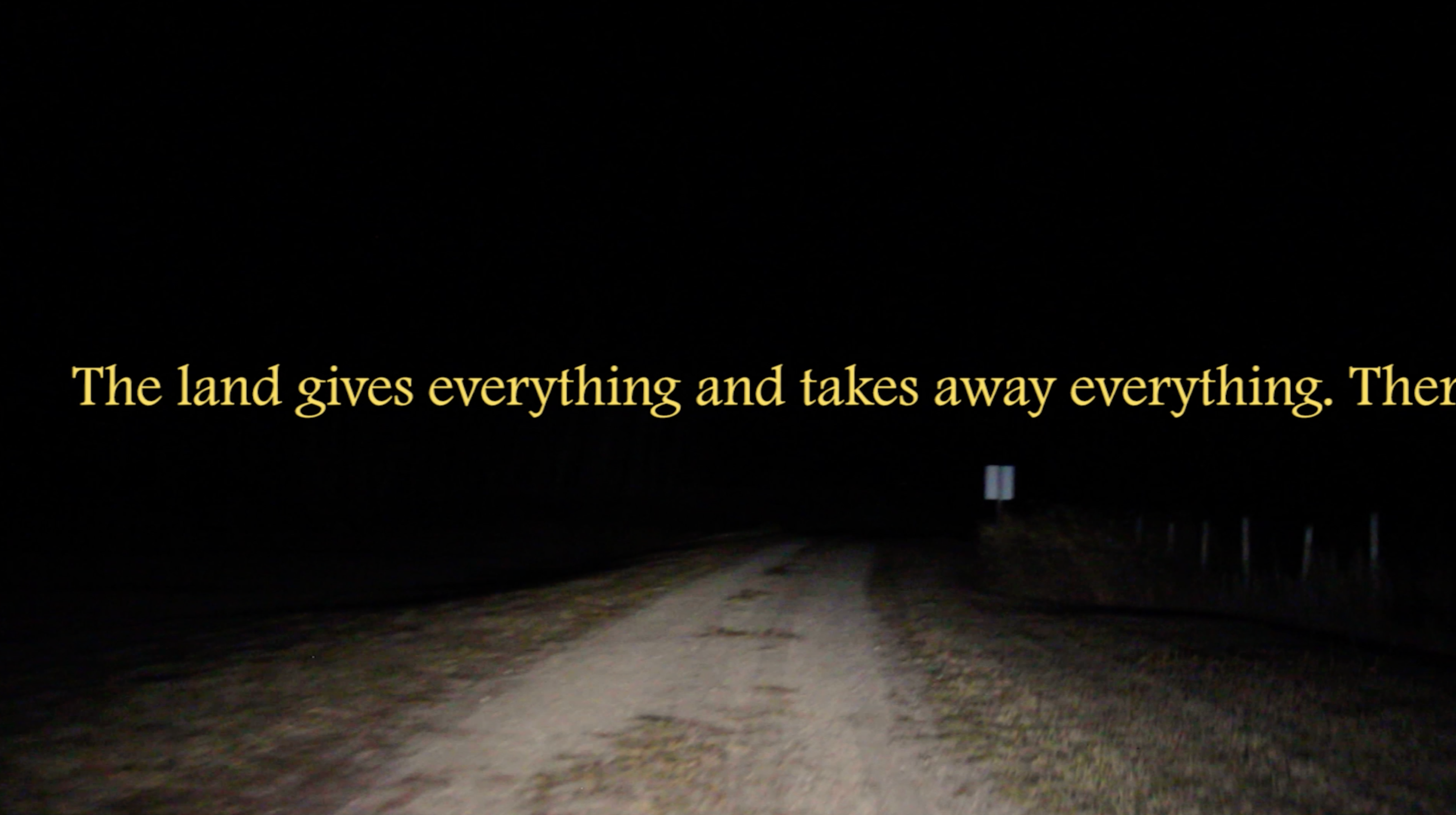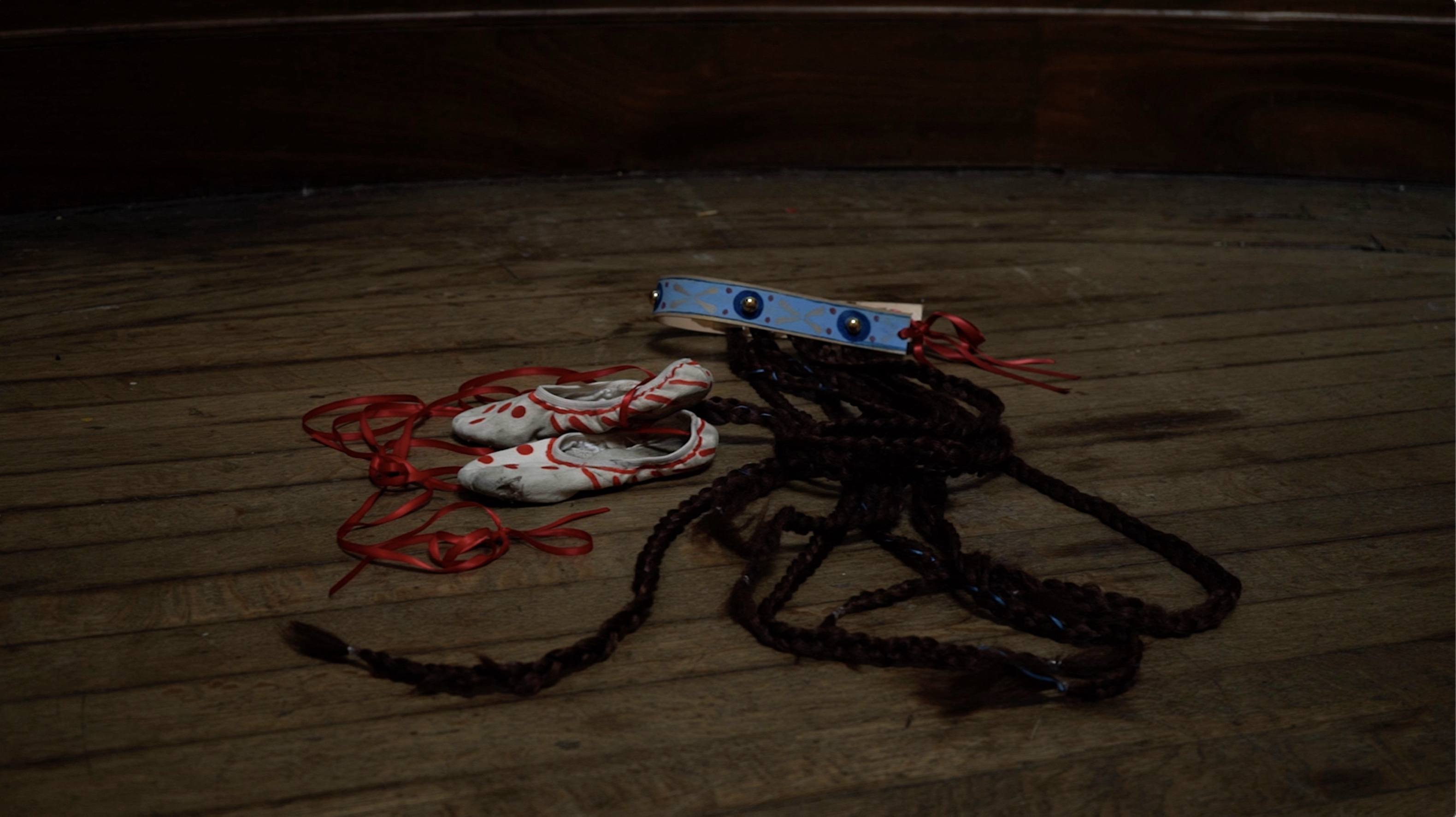Rite of Return (2021)
Single-channel digital video
11:52 minutes
This moving image work simultaneously reflects on Marianne Hirsch’s text Rites of Return whilst extending Rite of Spring, Le Sacre du Printemps (1913) – a riot-inducing ballet originally performed by the Ballet Russes at the Théâtre des Champs-Elysées in Paris. The initial narrative circles around a sacrificial virgin dancing herself to death, appropriated aesthetically and thematically from Slavic folklore. In this version, the soloist awakens fraught with solastalgia due to ecological decline and lack of community. She remedies this by drawing upon old-country aphorisms and the poetic structures of Strakh vylyvaty or pouring forth the fear, a Ukrainian healing technique to remedy anxieties, especially those related to land. Focusing on the balletic era of Diaghilev, Nijinsky, Stravinsky & Roerich; the costumes in Rite of Return are based on original objects, drawings and descriptions held in the V&A Dance Archives in London, UK.
Filmed in rural Saskatchewan, Canada; the Treaty 4 the territories of the nêhiyawak (Cree), Anihšināpēk (Saulteaux), Dakota, Lakota, and Nakoda, as well as the homeland of the Métis/Michif Nation; the Port of Ness facing the North Sea off the Isle of Harris and Lewis (Scotland); the Glen Etive rewilding project managed by the European Agricultural Fund for Rural Development and Scottish Woodlands; the Białowieża Forest (Poland), the last primal forest in Europe and my childhood home in Glencairn, Saskatchewan (Canada).
Written, Directed, Costumed, Performed & Produced by Ayla Dmyterko
Original Score by Mahmood Hussain
Captioning by Annie Crabtree supported by Collective Text
Supported by Creative Scotland, the Shevchenko Foundation, Hope Scott Trust, Glasgow Life & the Eaton Fund



